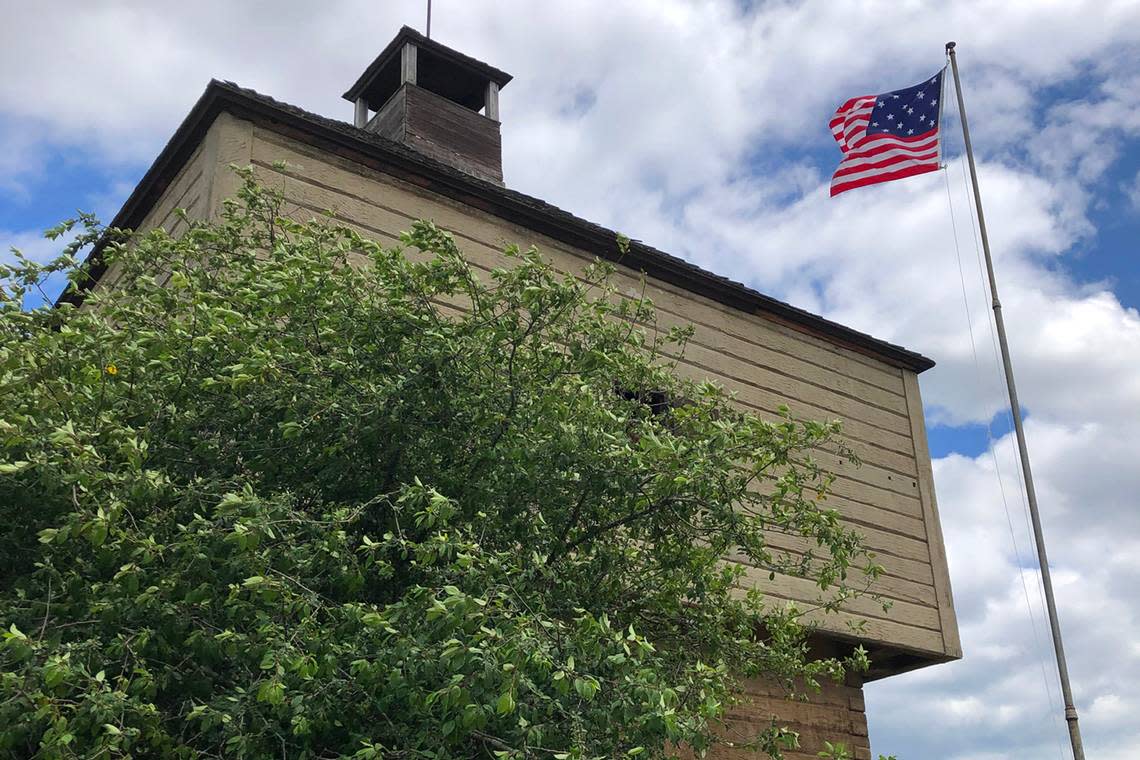Column: Exploring the rich and complicated history of Macon’s Fort Hawkins

- Oops!Something went wrong.Please try again later.
- Oops!Something went wrong.Please try again later.
Located at Fort Hill Street and Emery Highway, Fort Hawkins is a great place to get out and about, learn and experience a bit of local history while enjoying the weekend.
Inaccessible for many years, the site’s visitor center and its blockhouse are now open most weekends with tours from noon until 4 p.m. Some sources say it takes about an hour to take it all in but, of course, that varies from person to person, family to family and interest levels.
But Fort Hawkins is interesting.
“It’s a fun place to visit and especially to come with kids,” said Ashley Quinn, chair of the site’s board of directors and Collections Manager for Georgia College & State University’s William P. Wall Museum of Natural History in Milledgeville.
“The visitor center leads you through history before the fort, from Native Americans who lived here to the fort’s history through the school that was here. Of course, the reproduction of the blockhouse built in the 1930s through efforts of the Nathaniel Macon Chapter of the Daughters of the American Revolution is a highlight. You can go in and from the top level see Macon high up from a whole different point of view.”
After all, Benjamin Hawkins, who oversaw the fort’s establishment in 1806 and its completion in 1810, selected the highest point available for the outpost in the Muscogee (Creek) Nation, one east of the Ocmulgee River along the fall line, one which overlooked what was known as the Creek Trading Path, the sacred Muscogee (Creek) earthwork mounds known as the Ocmulgee Old Fields and now as the Ocmulgee Mounds National Historical Park, overlooked a trading settlement and overlooked what was to become Macon.
For a variety of reasons, there’s dispute and discrepancy over many of the “facts” about Hawkins’ life but much is clear. That includes the fact he was originally a well-to-do North Carolinian planter who served as a delegate to the Continental Congress and as a U.S. Senator.
Having served on George Washington’s personal staff during the Revolutionary War and having been involved with Native American affairs in the South previously, Washington appointed Hawkins a commissioner to the Creek Indians in 1796. In 1801, Thomas Jefferson appointed him principal agent for Indian affairs south of the Ohio River thus becoming principal U.S. Indian Agent to the Creek and bringing him to Georgia.
Though he spent much time at Fort Hawkins, he traveled the Southeast and made his home on a large farming/milling complex he created near Roberta, bringing his enslaved African laborers from North Carolina to build it. Suffering ill health much of his life, he died in 1816 at his home along the Flint River. A monument to Hawkins was erected in Roberta’s downtown in 1931 commemorating his life and service.
Hawkins’ actions as an Indian Agent reportedly earned him the moniker “Beloved Man of the Four Nations” and he gained respect for being an agent who “thought it worthwhile to examine into the situation of the women,” according to Claudio Saunt’s book “A New Order of Things. Property, Power, and the Transformation of the Creek Indians, 1733–1816.”
Hawkins learned the Muscogee language and two of his seven children were named after Native peoples, Muscogee and Cherokee. Indeed, Hawkins’ long tenure was one of peace in the area but unfortunately ended with President Andrew Jackson leading the charge to tragically and illegally displace Indian nations from their southern homelands to the west, including the Muscogee (Creek) of Georgia and Alabama to Oklahoma.
In conflict and revolt against removal, there was bloodshed and massacre in eastern Alabama.
An entertaining and independent perspective on Hawkins and Fort Hawkins can be heard on podcasts at middlegapodcasts.podbean.com. The first episode presents a question-and-answer session with Hawkins as portrayed by Marty Willett. Willett also portrayed Hawkins during the fort’s 2006 bicentennial celebrations.
Again, while some facts from any single source may be debatable and even in dispute by some close to the fort, the podcast is entertaining and enlightening as to much of the fort and Macon’s history.
And that’s the real point of an enjoyable visit to the spacious outdoor grounds and indoor displays at Fort Hawkins.
“After all, it was the western frontier of Georgia when it was built and gives a picture of life more than 200 years ago,” Quinn said. “It gives a perspective people can learn a lot from and better understand their roots and why Macon developed here as it did.”
In addition to regular open weekends, special days are set each year such as when the Ocmulgee Archeological Society hosts its annual event each May there. Quinn said the best contact for information is via info@forthawkins.com but there is a Facebook page, too. Search Fort Hawkins.
Quinn also said the Fort Hawkins Foundation welcomes volunteers, especially volunteers one day a month to help staff weekends. She said on the rare occasion the fort isn’t open on a weekend, it’s because of a holiday or lack of volunteers.
Related, while out and about Saturday, you might want to also hop over to visit Ocmulgee Mounds National Historical Park at 3 p.m. for a tour of the Earth Lodge mound with a park ranger.
Contact writer Michael W. Pannell at mwpannell@gmail.com.

